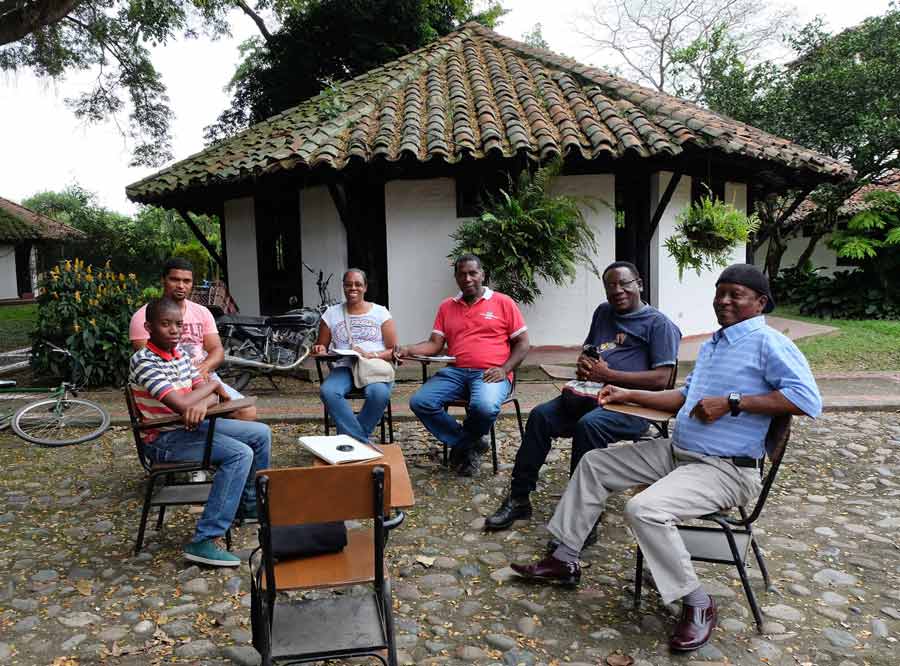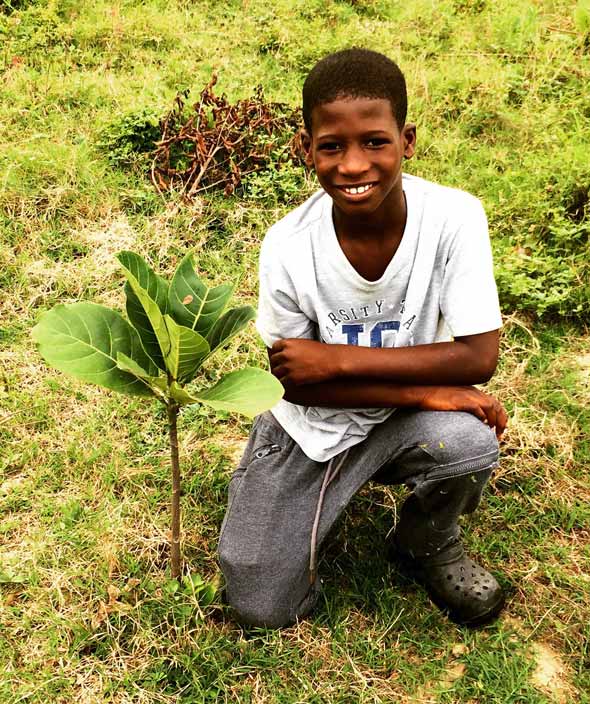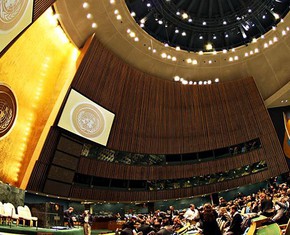The construction of the local Baha’i House of Worship in Agua Azul, a village in Norte del Cauca, Colombia, has recently reached an important milestone.
Construction officially began in January, after building contracts were formalized with a local firm in the region. Following the groundbreaking ceremony in May 2016, the three-meter high central mound on which the 18-meter tall Temple will stand has been completed, and the foundational work for the surrounding auxiliary structures has been laid. In time, these structures will be painted in the bright colors traditional to buildings in Colombia.

Some members of the team for the reforestation project meet to discuss their plans for the Bosque Nativo.
Parallel to the progress on building the House of Worship has been the reinforcement of activities, ongoing for some time now, that contribute to the spiritual and material progress of communities in and around Norte del Cauca. Inspired by the Temple, these community-building activities have multiplied, and a spirit of prayer, devotion, and participation has begun to increasingly permeate the area:
Although to outward seeming the [Baha’i House of Worship] is a material structure, yet it hath a spiritual effect. It forgeth bonds of unity from heart to heart; it is a collective centre for men’s souls …. Gracious God! The edifice of the House of Worship hath a powerful influence on every phase of life. – Abdu’l-Baha, Selections from the Writings of Abdu’l-Baha, p. 95.
This same spirit has found expression in practical projects. Since the property for the local House of Worship was acquired in December 2013, the community has been undertaking a reforestation project on an 11-hectare piece of land adjacent to the Temple site. The environmental initiative has helped to reintroduce native vegetation to the area, decimated by years of monoculture plantations of sugarcane. The team committed to the project has already successfully raised 43 species of plants on the land, which is designated as a Bosque Nativo, or native forest.
… active souls and vigilant people rest neither by day nor by night; they strive to be closely linked to the divine Kingdom and thereby become the manifestations of infinite bounty and ideal gardeners for these forests. Thus the world of humanity will be wholly transformed and the merciful bounties become manifest. – Ibid., p. 282.
“Working in a team to recover many of the lost plant species that are part of this land has been one of the most inspiring parts of the project,” said Jason, 12 years old and the youngest member of the reforestation team.

The reforestation project on the Bosque Nativo site brings together community members, both young and old, to reintroduce native vegetation to the area.
In March, the team is planning a special community project to invite individuals from the surrounding communities to bring various plant species from their own homes or farms as a contribution to the Bosque Nativo.
The relationship between the environment of the region and the community is also expressed in the design of the House of Worship, inspired by the shape of the cocoa pod—a plant that grows abundantly in Colombia and is integral to the identity of the landscape and the lives and economy of the people.
“The Temple is already becoming a source of inspiration, a source of development,” said Julian Gutierrez Chacon, the architect for the House of Worship, reflecting on the future of the community. “People are disoriented and have many stresses, and for them the Temple will be a north star, a compass that will reorient lives.”
The design for the Temple in Norte del Cauca was announced in 2014. It is one of the first local Baha’i Houses of Worship to be built, among four others announced by the Universal House of Justice in 2012.
















Comments
Sign in or create an account
Continue with Googleor